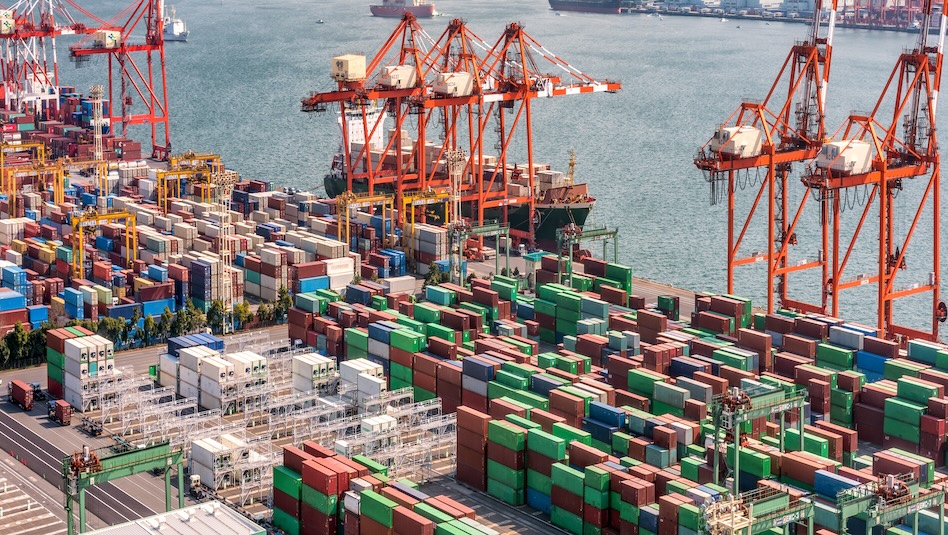




Monthly Economic Update: One for the road
 DOWNLOAD
DOWNLOAD

Inflation Update: Still low, still slow
 DOWNLOAD
DOWNLOAD

Philippines Trade Update: Exports momentum continues
 DOWNLOAD
DOWNLOAD


Wealthy Filipino empty nesters are moving to luxury condominiums

There will be new fashionable addresses in town, away from the old-money enclaves that are the exclusive villages in Makati, Pasig and San Juan.
Condominium developers are building residences that cost PHP 12 million to the hundreds of millions of pesos, as they try to attract wealthy empty nesters.
Ayala Land Premier’s Park Villas in Makati sit above PHP 500 million; Federal Land, Inc., Japan’s Nomura Real Estate Development Co., Ltd. and Isetan Mitsukoshi Holdings Ltd.’s Seasons Residences complex have units that start at PHP 23 million.
“For every luxury village, there’s always 5% to 6% (of homes) for sale,” Dan Ian dela Pasion, head of sales at Torre Lorenzo Development Corp., said in an interview with BusinessWorld.
Even boutique developers like Torre Lorenzo, known for building condominiums close to universities, are joining the luxury game with the Gallery at Torre Lorenzo Loyola, with units selling from PHP 25 million to PHP 75 million, targeting wealthy residents of Loyola Grand Villas and La Vista, which are home to several old families and politicians.
Joey Roi H. Bondoc, research director at property consulting firm Colliers Philippines, said the sale of luxury homes and the subsequent exodus to condominiums of matching price and caliber is driven by empty nesters — wealthy older people whose offspring have gone on to start careers or families, leaving the main family home empty.
“Anecdotally, it’s the empty nesters who are doing that,” he told BusinessWorld by telephone. “The decision is that usually, they just sell it and then acquire a luxury condominium unit.”
“They shift from horizontal to vertical [living]. Anecdotally, that’s what we get,” he added.
They move to a smaller condominium either to downsize because their kids are already grown-ups or they have faced a reversal of fortune and need to scale down, Mr. Dela Pasion said.
“They need funds,” he said, adding that others have decided to partition their wealth and convert the big house to cash.
More than that, the decision to move to vertical living is also a matter of physical practicality and the desire for unmatched comfort and lifestyle, he pointed out.
“Living in Metro Manila requires a lot of time for you to move in and out of the village, versus if you live in an urban area where everything is accessible,” he said.
At the Gallery, there are only four units per floor and a total of 36 residential units in the whole building, which provides security and exclusivity, Mr. Dela Pasion said.
Amenities and facilities include lounges, pools, function rooms and a pet park. “The concierge will conveniently and practically cater to the 36 apartments easily.”
Mr. Bondoc makes a case for vertical residences, as opposed to the large horizontal housing of the wealthy that the country has gotten used to.
“If you have a 500-square-meter lot, will you be able to maximize it?” he asked. “Even with the amenities of that village, will you be able to enjoy it?”
“But if you upgrade to a condominium, you’ll live in a relatively smaller unit, say 200 square meters, but you’ll have all the amenities tucked into a single floor, and you can enjoy and maximize them. I think that’s one of their major selling propositions,” he added.
Immune from shocks
While there are reports of a condominium surplus in the country, both assert that the people buying P12-million condo units — Mr. Bondoc’s baseline price for what constitutes a luxury condominium — are immune from the fluctuations of that market.
Mr. Dela Pasion counts the surplus at 35,000 units, a supply good for the next three years, while Mr. Bondoc places the surplus at eight years of supply.
“As long as the prices keep on [rising], as long as this market — the high-end market — keeps on growing, it will continue,” Mr. Dela Pasion said. “This market is untouchable.”
“They’re a recession-proof market. As long as the economy is doing well, and as long as people can afford trophy properties, it will keep on growing,” he added.
“This market is essentially shielded from elevated interest rates and mortgage rates because this market is awash with cash,” Mr. Bondoc said. “If they want to buy, they will buy.”
Mr. Bondoc said the eight-year surplus — not in luxury condominiums but in low- and mid-income housing — is not “etched in stone.”
In the central business districts of Makati, Bonifacio Global City in Taguig and Ortigas, where residential units are predictably highly priced, business is booming.
“They are doing much better compared with certain locations in Metro Manila,” he said. “There are green shoots here. It’s not all doom and gloom.”
“That eight-year [surplus projection] changes every quarter,” he said, adding that it could change depending on the number of unsold units.
Mr. Bondoc said luxury housing is “pretty isolated” from the projected surplus. “One of the major reasons is pretty evident. It is a small portion of the Metro Manila segment.”
He noted that only a tenth of the Metro Manila real estate market caters to these high-net worth individuals.
“This is an affluent market,” he said. “The equity — the downpayment required when they started to buy condos in the preselling sector — that’s a pretty heavy equity that they have to pay.”
Who lives where
If the wealthy end up buying condos, who will live in the big house in the village? Are they buying these condominiums to actually live there or just for investment? If the rich do trade the big house for vertical living, who will end up living in these exclusive villages?
“What we’ve noticed is that they will still maintain their primary residence,” Mr. Dela Pasion said. “Since they still have funds to keep it, they just want to be practical, and just have another investment, where they can move easily.”
Mr. Bondoc sees a similar pattern, noting that a number of buyers of a recent luxury development in Pasig come from an exclusive village nearby.
He added that the wealthy buying these luxury condominiums aren’t after passive rental income; they really want to live there.
“They’re a bit wary of that (putting it up for rent) — the wear-and-tear and other costs,” he said. “They’d rather keep it or resell it to the secondary market.”
So who will eventually inhabit the exclusive villages? “They probably have other children — younger, or perhaps their grandchildren who will eventually live there,” Mr. Bondoc said.
“They have growing families, perhaps. It’s just the old couple who’s upgrading. But they have other friends, relatives or perhaps they will resell it to other buyers who would still prefer to live in a house and lot,” he added.
He predicts that the luxury condominium boom will expand outside the main business districts. The Gallery has started in Loyola Heights, after all, essentially a university community.
He also expects the luxury boom to move out of the city eventually, citing branded developments in Clark, Pampanga and Cebu.
Torre Lorenzo has started building properties with the Dusit Thani hotel group in both Davao in the country’s south and in Lipa, Batangas, which is less than two hours away from the Philippine capital.
“I wouldn’t be surprised that in the next five years, the launch of more upscale projects in these areas [outside Metro Manila] will be more aggressive,” Mr. Bondoc said. — Joseph L. Garcia, Senior Reporter
This article originally appeared on bworldonline.com





 By BusinessWorld
By BusinessWorld